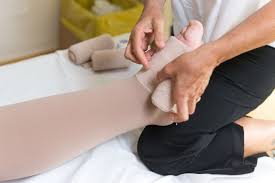Conservative treatment for lymphoedema
Conservative Treatment for Lymphedema
Standard treatments for lymphedema are:
Compression: Using elastic garments like a stretchy fabric bandage or support stocking can help apply pressure to your arm or leg to keep fluid from collecting and help move fluid out to other parts of your body
Exercise: Stretching can loosen areas that feel tight, hard or heavy and certain movements can help with fluid navigation throughout your body
Massage: working with our rehabilitation services at OHSU, we are have lymphedema specialists that provide manual lymphatic drainage to move the fluid throughout the body, or soft tissue massage to help loosen scar tissue to relieve discomfort and reduce swelling
Medication: antibiotics or other prescribed medicine can also be offered to treat lymphedema
Surgery for lymphedema
Because every patient has a different medical history, examination findings and test results, the specialists will recommend a treatment plan designed just for you.
For patients with new symptoms of lymphedema, surgery may or may not be necessary. For patients that do undergo surgery to improve drainage of lymphatic fluid, additional treatments like compression, exercise and massage may still be essential to reduce swelling for optimal health.
operative approaches to lymphedema include:
Lymphovenous bypass: for patients with mild lymphedema, microsurgery fellowship trained surgeon uses a high powered microscope and superfine micro-instruments to redirect fluid from lymphatic vessels in the affected arm or leg to nearby venous channels. This redirection allows the body to clear the fluid through the venous system.
Vascularized lymph node transfer: through microsurgery, specialized, lymphedema-trained surgeons are able to move lymph nodes from other parts of the body to the area of the body affected by lymphedema. This transplant allows drainage of the fluid away from the affected arm or leg.
Liposuction debulking: for patients with long-lasting or chronic lymphedema, the fluid is replaced over time with fat, which can add to the discomfort of the disease. plastic and reconstructive surgery team can offer patients with advanced lymphatic disease liposuction debulking, which can be performed alone or in combination with the other techniques described above.

